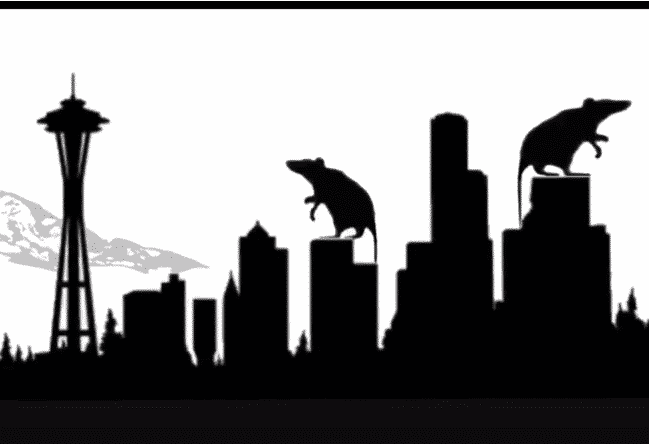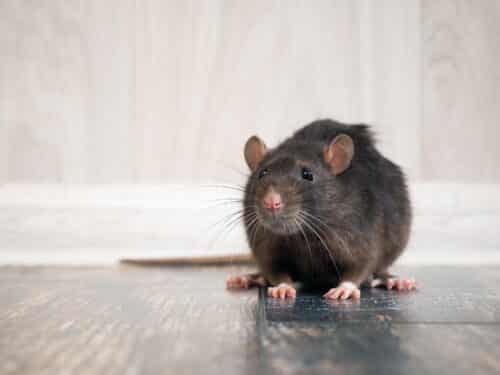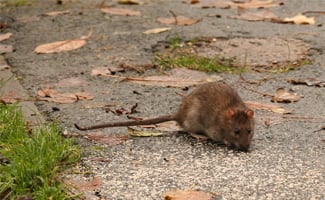
Seattle is home to more than its fair share of rats. It has become a breeding ground for all sorts of rodents. Rats love to call Seattle home for many reasons, including a climate that is attractive year-round.
Rodents have long found Seattle and the Pacific Northwest a great place to call home. Here are a few reasons why.
Why Seattle’s Climate Attracts Rodents
Rainfall & Shelter
- The abundant rainfall in Western Washington contributes to lush vegetation. This means more food sources, plentiful water sources, and ample coverage in outdoor environments.
- Urban settings also provide prime opportunities for shelter. Seattle’s older homes and aging infrastructure offer entry points through gaps and cracks. “Underground Seattle”, the result of rebuilding the city at a raised level after the 1889 Great Fire, grants rats shelter and unobstructed highways under the city.
Urbanization & Food Availability
- Seattle’s urban development may disrupt natural habitats, but it provides opportunities for these resourceful rodents. Food sources abound in proximity to humans: poorly managed waste, compost piles, bird feeders, docks, and industry waste. All these support growing populations of rats and rodents.
- Seattle’s population density of humans also intensifies the opportunities. There are more places to shelter, garbage to consume, and things to gnaw.
Climate Change Effects
- Warming winters in Seattle and the Pacific Northwest can also extend the months that rodents are at their most active. This can lead to population growth as rats reproduce more frequently with less fetal mortality.
- This trend can also lead to longer foraging seasons that lead to healthier rats who are more likely to survive the colder, less hospitable months.
Seattle’s Year-Round Conditions for Rodents
Spring
- Breeding Surge – Rats usually begin their annual breeding season in March. So, there is a surge in the rodent population in the Seattle region in late spring. (A female rat produces an average of 6-12 pups per litter and takes 21 days to gestate them. She can become pregnant again just days after giving birth.
- Ideal Weather Conditions – The perfect factors for rat growth occur in the spring in the Seattle area. Mild but warming temperatures and frequent rains create a lush mecca for rats. Vegetation, insects, and seeds are abundant food sources for rodent survival and reproduction.
- Urban Factors – If vegetation doesn’t provide the shelter they crave, there are still plenty of opportunities for rats to find shelter in an urban environment. From buildings, to warehouses, to homes, to underground tunnels, Seattle is perfectly designed to succor rodents. Older infrastructure also provides shelter opportunities.
- Increased Competition – All the Seattle area population growth can lead to increased competition for resources. This can drive rats to seek shelter and nesting sites in homes and businesses.
Summer
- Warm Temperatures & Active Breeding – Summer temperatures in Seattle remain fairly temperate, allowing rats to spend more time outdoors. This leads to more foraging and reproducing at a steady pace.
- Abundant Food Sources – Summer brings more outdoor human activity which means more food sources. Picnics, fairs, backyard BBQs, and festivals increase food waste in parks, streets, and residential areas. Overflowing trash bins, compost piles, and outdoor dining are a smorgasbord of treats for rats and other rodents.
- Urban Setting – Summer months may lead to disruptions for rodents with construction projects that force them to migrate to new areas. But generally, even these disturbances don’t slow them down for long, as they adapt quickly to new settings.
- Increased Sightings – Pest control calls may increase in summer as rats are more visible, because they spend more time outdoors, as do humans. So, paths are more likely to cross.
Fall/Winter
- Activity – Rodent activity in the fall may increase as temperatures and rain fall and rats seek indoor shelter to escape. The activity may fall off a bit in winter, especially during the coldest weeks. However, leading up to that, rats are busy. In fact, fall marks a second peak in breeding. In the Seattle region, there is another bump in rat population growth, usually in September.
- Food Hoarding – Rodents will exhibit increased foraging habits in the fall months as they stockpile food for winter. As they anticipate scarcity of natural food sources in winter, they will stash food in their nests or begin to make their way indoors to homes with easily accessible food sources. They will find homes and businesses, which are great places to overwinter.
- Urban Factors – Dense populations of people play into the hands (or paws) of rodents perfectly. They find abundant opportunities for sheltering indoors, away from the elements. And in climate-controlled conditions. Humans also feed rats well on waste, compost, and the like, especially over the colder months when natural resources become scarce.
It is no surprise that Seattle is home to a very healthy rodent population all year round. But by knowing more about how and why rodents thrive in the area, we can be more equipped to keep them out of our homes and businesses. If you suspect you have an infestation of rats, give Cascade Pest Control a call: 888-989-8979.



